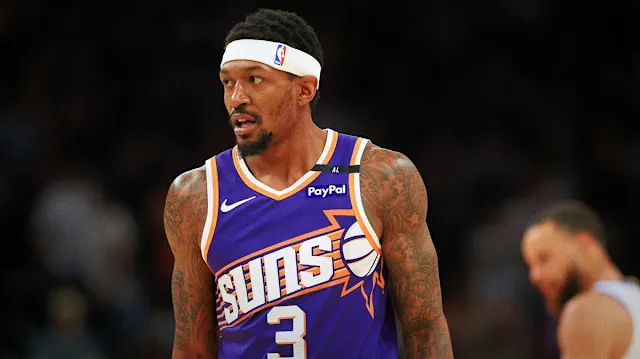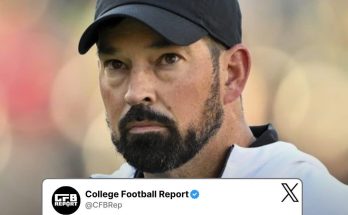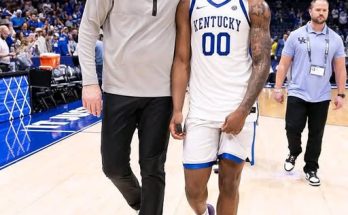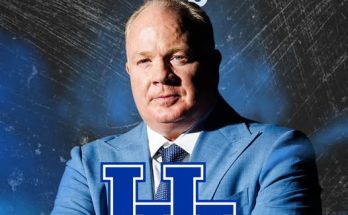In the ever-evolving landscape of NBA free agency, the summer of 2025 has been marked by shocking trades, game-changing signings, and unexpected revelations. One of the most intriguing developments has now come to light with a report that the Golden State Warriors had extended a minimum contract offer to three-time All-Star guard Bradley Beal before he ultimately chose to join the Los Angeles Clippers. This surprising nugget of information has sent ripples through the basketball community, sparking heated debates about legacy, value, fit, and the future direction of one of the most iconic franchises of the last decade.
Bradley Beal, once the face of the Washington Wizards and a player who once signed a five-year, \$251 million supermax contract in 2022, has seen his stock fall in recent seasons due to a combination of injuries, declining production, and shifts in league dynamics. After being traded to the Phoenix Suns in a blockbuster move during the 2023 offseason, Beal’s tenure in the Valley was marred by inconsistency and questions about his role in a star-studded yet dysfunctional lineup alongside Kevin Durant and Devin Booker. Although Beal flashed brilliance in short spurts, he struggled to consistently stay healthy and make a definitive impact on a team with championship aspirations. Ultimately, his stint with Phoenix ended after two seasons when the franchise moved to reshape their roster around younger, more durable pieces.
The free agency period of 2025 presented a new chapter for Beal, who, now in his early 30s, was looking to reestablish his value and reputation in the league. Many speculated that Beal would prioritize a situation where he could contribute meaningfully to a contending team, ideally in a reduced role that allowed him to preserve his body and thrive as a secondary or tertiary option. What no one anticipated, however, was the nature of the offers he would receive. According to multiple insiders, the Golden State Warriors—still holding onto remnants of their dynasty core with Stephen Curry and Draymond Green—extended Beal a veteran’s minimum contract in an attempt to bolster their aging yet competitive roster.
The decision by the Warriors to offer only the minimum stunned many within the NBA circles. Golden State, known for their willingness to spend under Joe Lacob’s ownership, had historically shown a commitment to winning at all costs. Yet, their offer to Beal was more symbolic than lucrative, signaling a shift in their team-building philosophy in light of salary cap constraints and the new Collective Bargaining Agreement’s punitive luxury tax implications. With the league introducing harsher penalties for repeat offenders above the second tax apron, teams like the Warriors have found themselves needing to recalibrate their approach.
By extending a minimum offer, the Warriors seemed to be betting on Beal’s desire to prioritize legacy over earnings. The logic was sound—come to Golden State, play alongside Stephen Curry, potentially compete for a title, and rehabilitate your image in a winning culture. The Warriors have done this before with veteran reclamation projects, most notably with players like Andre Iguodala and Shaun Livingston in previous years. The offer was, in essence, an invitation for Beal to join a championship pursuit without disrupting the financial and rotational structure of the team.
Yet Beal chose differently. He signed with the Los Angeles Clippers, a franchise that, under new head coach Sam Cassell and with a revamped front office, is aiming to make a final push before potentially blowing up their current core. Kawhi Leonard and Paul George are still central figures in the Clippers’ setup, but the team is now looking to surround them with savvy veterans who can contribute on both ends. Beal, joining them on a more favorable mid-level deal, seemed to prefer the larger role, possibly more minutes, and the lifestyle and branding opportunities that come with Los Angeles.
This decision naturally raises the question—what did Beal see in the Clippers that the Warriors couldn’t offer? First, playing time and offensive freedom. While Golden State would have utilized Beal as a scorer off the bench or a secondary playmaker, his role in Los Angeles figures to be more substantial. The Clippers are still working to fill the void left by Russell Westbrook’s departure and James Harden’s unpredictable future. Beal’s ability to create shots, navigate pick-and-rolls, and provide clutch scoring will be valuable assets for a team that has often struggled to generate consistent offense in the playoffs.
Second, the Clippers’ roster makeup likely played a factor. Unlike the Warriors, who continue to rely heavily on an aging core, the Clippers have younger pieces like Terance Mann, Bones Hyland, and Amir Coffey who can support Beal defensively and athletically. The balance of experience and youth in L.A. gives Beal an environment that’s both competitive and not overly reliant on his every move, something that could help preserve his health and prolong his career.
Third, and perhaps most importantly, Los Angeles as a market presents enormous off-court appeal. Beal has long been involved in philanthropic efforts, business ventures, and personal branding activities. L.A., with its entertainment infrastructure and celebrity culture, provides fertile ground for a veteran like Beal to expand his post-basketball portfolio. While the Warriors, based in the Bay Area, also offer high-profile opportunities, the sheer magnetism of Los Angeles likely gave the Clippers the edge.
From the Warriors’ perspective, the lowball offer to Beal may not just be about cap space—it could signify a philosophical pivot. With Bob Myers gone and Mike Dunleavy Jr. steering the front office, Golden State has begun to focus more heavily on developing young talent such as Jonathan Kuminga, Brandin Podziemski, Moses Moody, and Trayce Jackson-Davis. The days of splashy free-agent signings or expensive win-now trades may be numbered. Instead, the Warriors appear intent on bridging the twilight of the Curry era with the promise of a new generation. In that context, a minimum offer to Beal could be interpreted less as disrespect and more as a tactical gesture—an opportunity for mutual benefit if the fit was right.
Unfortunately, the fit wasn’t ideal for Beal. And while the Warriors will move forward, fans and analysts will undoubtedly continue to debate what might have been. Would Beal have thrived playing next to the greatest shooter of all time? Could Steve Kerr have crafted a system that unlocked Beal’s full potential without the physical demands of a primary scorer? Could a core of Curry, Beal, Draymond Green, and potentially Klay Thompson—had he remained—rekindled the glory of previous championship runs?
The answer will remain speculative, but the bigger story is how quickly things can change in the NBA. Beal, once a \$50 million-per-year player, found himself accepting mid-level offers. The Warriors, once the most feared dynasty in basketball, are now fishing for value deals in the twilight of their championship window. And the Clippers, once labeled as underachievers, are suddenly a fascinating experiment of veteran synergy and organizational ambition.
It also speaks volumes about how today’s NBA values flexibility, defense, durability, and fit over raw talent alone. While Beal remains an elite shot-maker, his defensive liabilities, injury history, and high usage tendencies have made front offices wary. Teams are no longer willing to pay a premium for star names without guarantees of consistent two-way impact. The days of legacy contracts are over; in their place, smart, analytical management has taken the wheel.
Looking ahead, Beal’s tenure in Los Angeles will be under the microscope. If he returns to All-Star form and leads the Clippers deep into the playoffs, it will be viewed as a masterstroke for both him and the franchise. If not, it may be seen as another costly gamble in a decade marked by short-sighted moves from the Clippers front office. As for the Warriors, their patience may pay off if their young players blossom, but they’ll face mounting pressure if Curry’s prime fades without one last deep postseason run.
The league at large will also take note. Beal’s journey from franchise cornerstone to mid-level role player reflects the unforgiving nature of professional basketball. It’s a stark reminder that stardom is not static—it must be maintained, adapted, and, at times, sacrificed for the greater good. For younger players watching from afar, the lesson is clear: longevity in the NBA is earned not only by talent but by humility, evolution, and timing.
Fans, too, are left to ponder. The “what if” scenarios are tantalizing. What if Beal had taken the Warriors’ offer and accepted a bench role to chase a ring with Curry? What if the Warriors had dug deeper into their coffers to offer Beal more money? What if Beal becomes the missing piece in L.A. and helps the Clippers finally reach the NBA Finals for the first time in franchise history?
Only time will answer those questions, but what remains undeniable is that this development marks a significant moment in the ongoing saga of NBA roster construction. It is a case study in ego management, financial realism, strategic fit, and the ever-present chase for relevance in a league that never stops evolving. The Warriors made a calculated offer. The Clippers seized the opportunity. Bradley Beal made his choice.
Now, all that’s left is for the season to play out and reveal which side bet correctly.



